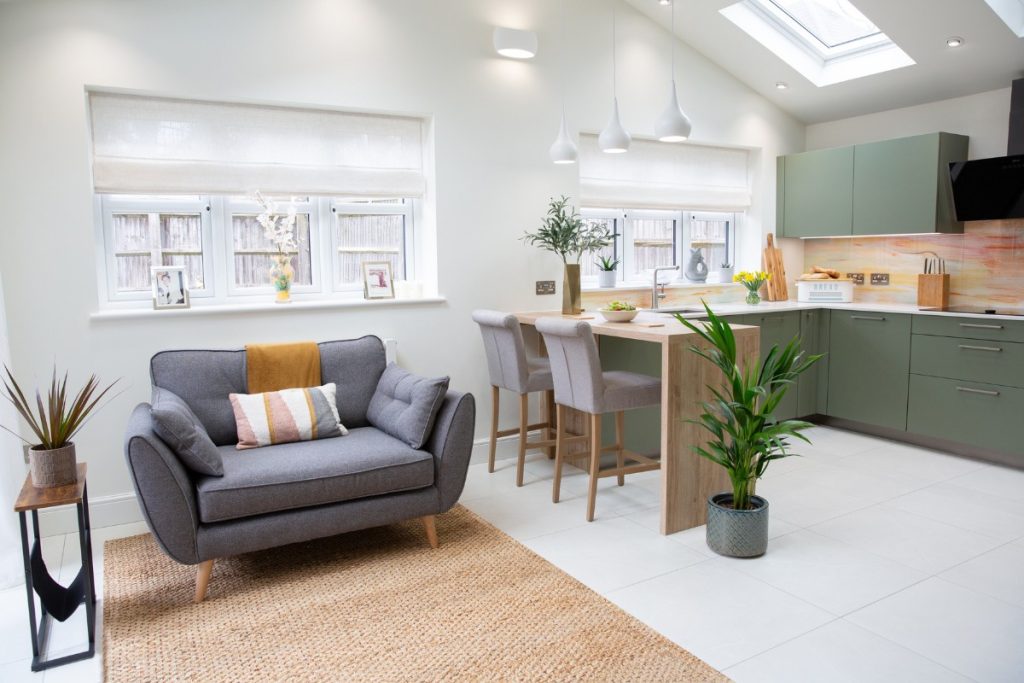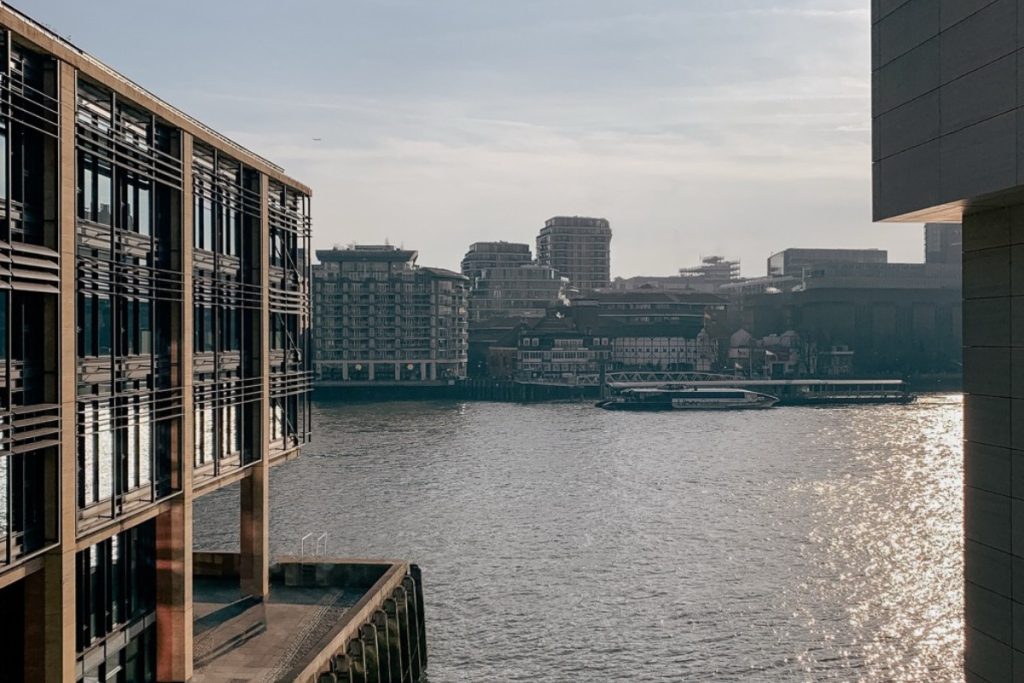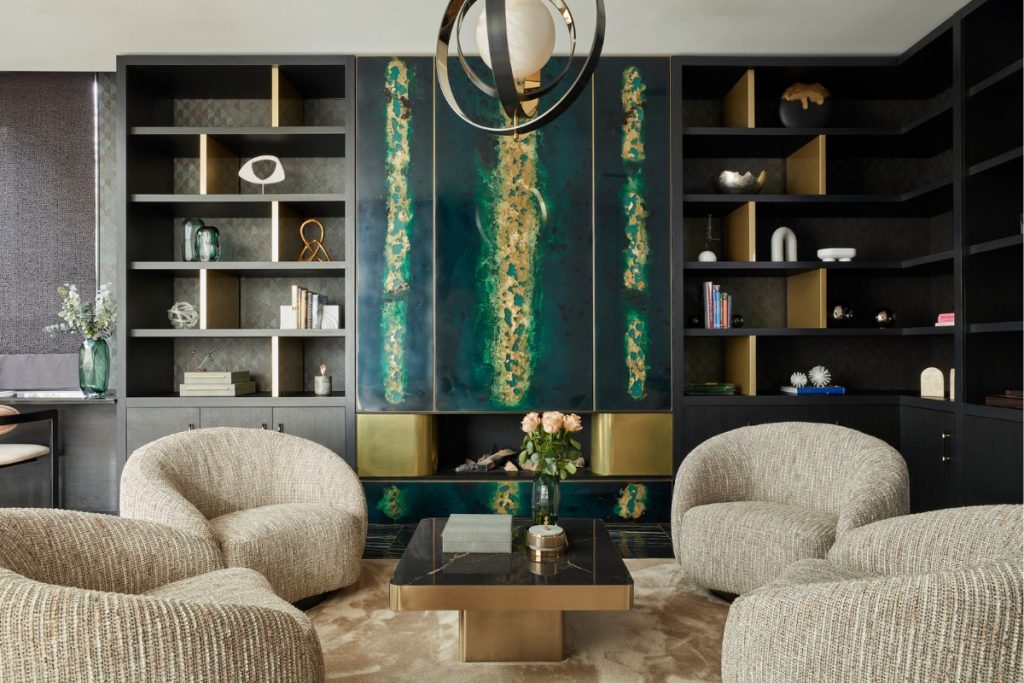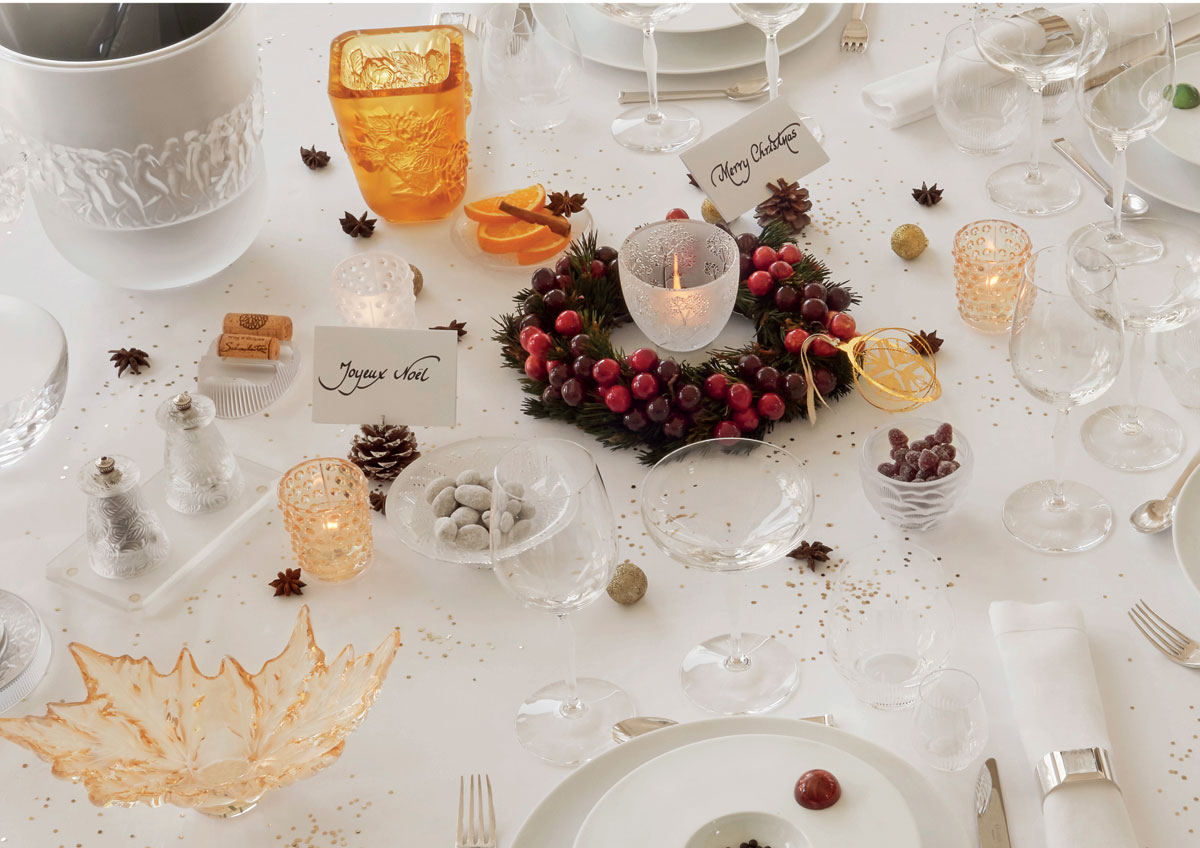 18th December 2020 | IN HOSPITALITY DESIGN | BY SBID
18th December 2020 | IN HOSPITALITY DESIGN | BY SBIDWhen thinking of the use of crystal in the home both as an architectural feature and decorative item, there is no better example of its use than at Villa Rene Lalique, the former family home of Rene Lalique and now a 5 star hotel and 2 Michelin star restaurant which celebrates 100 years this year (2020). A celebration and showcase of Lalique from the wine glasses to the door handles, and Damien Hirst artworks lining the cellar can be bought or made bespoke to suit your schemes from Lalique’s London boutiques.
The origins of Villa Rene Lalique
By 1920, the Rene Lalique the artist had become a master glassmaker of some renown. He decided to build his new factory at Wingen, having been accorded the right to occupy a plot of state-owned forestry land. The location had two advantages: the village was on the rail network, and there was a local charcoal producer to supply the necessary fuel for his furnaces.
In addition to the land accorded by the municipality for him to construct the factory, René Lalique was also offered a plot on which to build a house. This would enable him to live nearby and supervise the progress of construction work. René Lalique paid increasingly frequent visits to the house in Wingen, while maintaining his apartment in Paris.
Today, the façade has not changed in a hundred years; the shutters are still painted peacock blue. The house reflects the traditional architectural features of Alsace: studwork, wooden balcony, apron walls shaped like curule seats beneath the windows, French windows framed in Vosges granite, and three chimney stacks on the roof. Inside, a living room, a kitchen, an imposing central staircase leading to the bedrooms and René Lalique’s study: an ensemble that constitutes an imposing family residence in classic style.
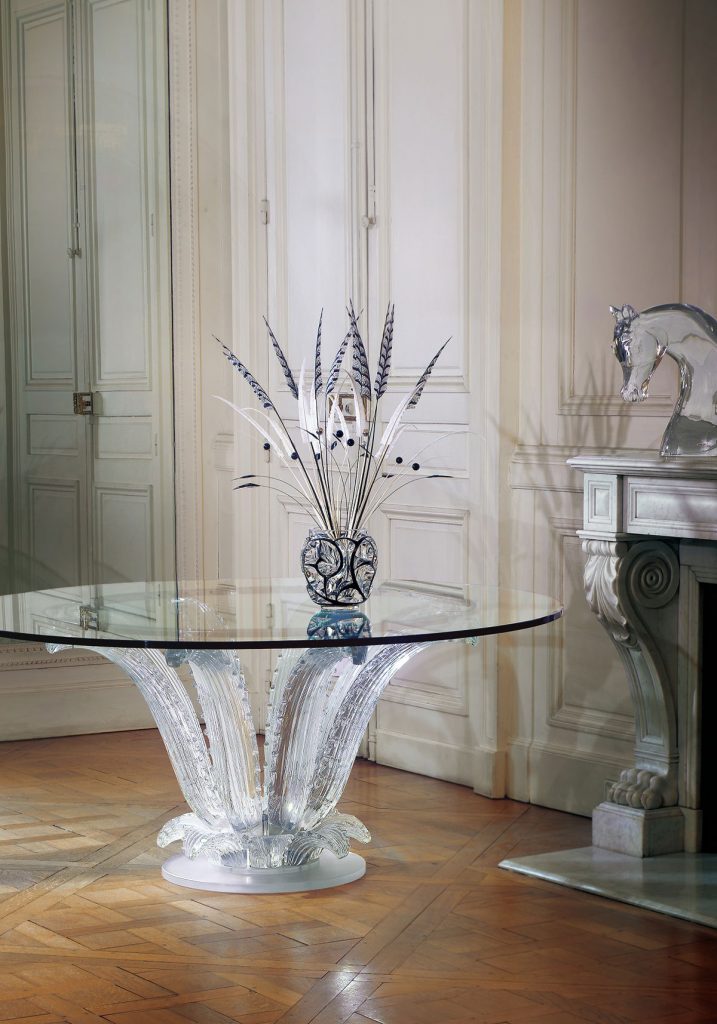
Transforming the villa for luxurious living
On 14 February 2008, Mr Silvio Denz purchased Lalique. In 2011, Silvio Denz, who had been aware of the existence of the house in the village without ever having taken a particular interest in it, had a closer look. He found it virtually intact, aside from some minor leaks in the roof. How could he resist its charm? Silvio Denz decided to refurbish the house for his visits to Wingen. But very soon the idea of turning it into a haven of luxury, worthy of the most elegant stately homes, made perfect sense. The bedrooms were transformed into lavish suites, complemented by an excellent gourmet restaurant. What better setting in which to present the world of Lalique? As much as it had captivated Silvio Denz, the project appealed to lovers of fine cuisine and the decorative arts, as well as collectors. The interior was all about “living Lalique”, and doing so in a contemporary context, amidst rare and fabulously beautiful objects.
The Villa, a veritable showcase for the Lalique art of living and savoir-faire, was unveiled to the public on 18 September 2015.
The exterior of the building was restored to its original state, remaining faithful to its appearance in the epoch of René Lalique; the interior was refurbished down to the finest detail to turn it into a magnificent treasure trove. The interior designers Lady Tina Green and Pietro Mingarelli pulled off with aplomb the feat of retaining the authenticity of a family residence while transforming it into a luxury boutique hotel.
Inside the entrance, a selection of crystal pieces from the Lalique collection and new creations from the factory capture the light that enters with the guest, giving a remarkable sense of clarity and purity, the whole illuminated by a magnificent chandelier. This first impression of projected light is an extraordinary experience.
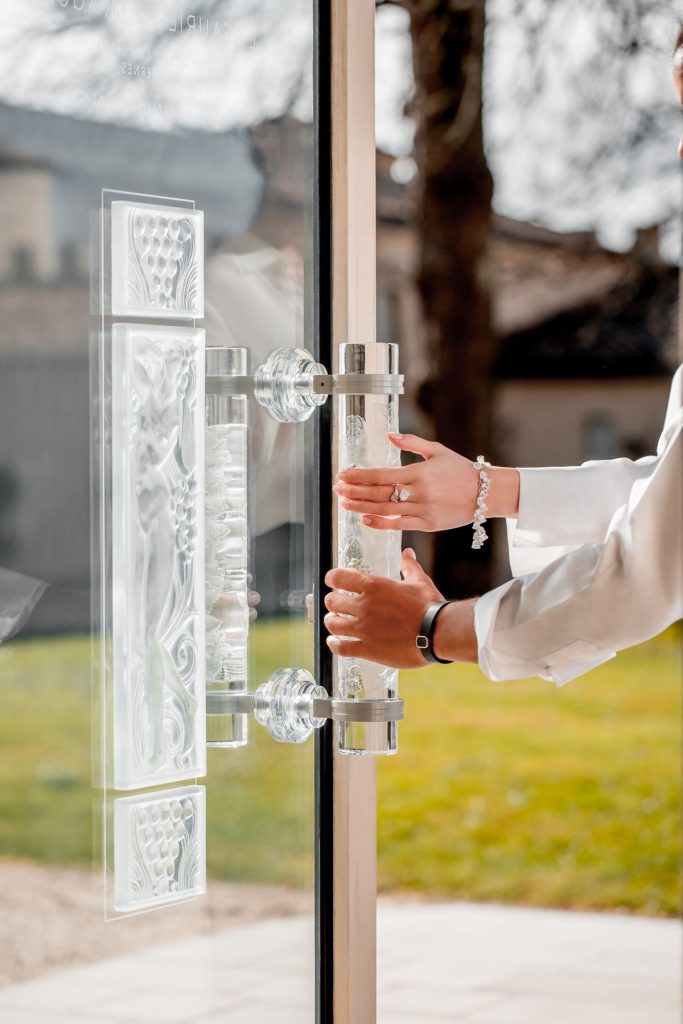
Every detail of the Villa’s interior provides a reminder. From the door handles to the adornments on the armchairs in the lounge, from the cushions of the sofas decked with pieces of crystal to the ebony lacquer of the bar, the view from the dining room to the salon… All is an interplay of light and transparency in the Art Deco style.
To explore Villa René Lalique is to follow in the artist’s footsteps. Six suites are decorated to reflect his various creative periods. The Zeila suite is the sole exception, taking its name from the panther modelled by Marie-Claude Lalique. Guests wishing to spend the night in the bedroom occupied by René Lalique choose the Hirondelles suite, which is reached via a replica of the original black staircase. The Rose suite is decorated in soft powder tones; while Dahlia, with its beige-ivory furniture, is an insistent appeal to relax. All the bathrooms are magnificently decorated,from the made-to measure crystal panels to the crystal taps.
On the second floor, a beautiful balcony belonging to the Dragon suite gives onto the park. The Masque de Femme suite offers spacious family accommodation. This duplex comprises two bedrooms and a salon, a real bijou of the Lalique art of contemporary living.
The five-star hotel, a member of the Relais & Châteaux collection, is run with great commitment and meticulous attention to detail. The renowned Swiss architect Mario Botta designed an extension to the Villa that is an ideal space for a restaurant. It consists of a rectangle of glass, supported by columns of Vosges sandstone, discreetly linked to the hotel’s reception area.
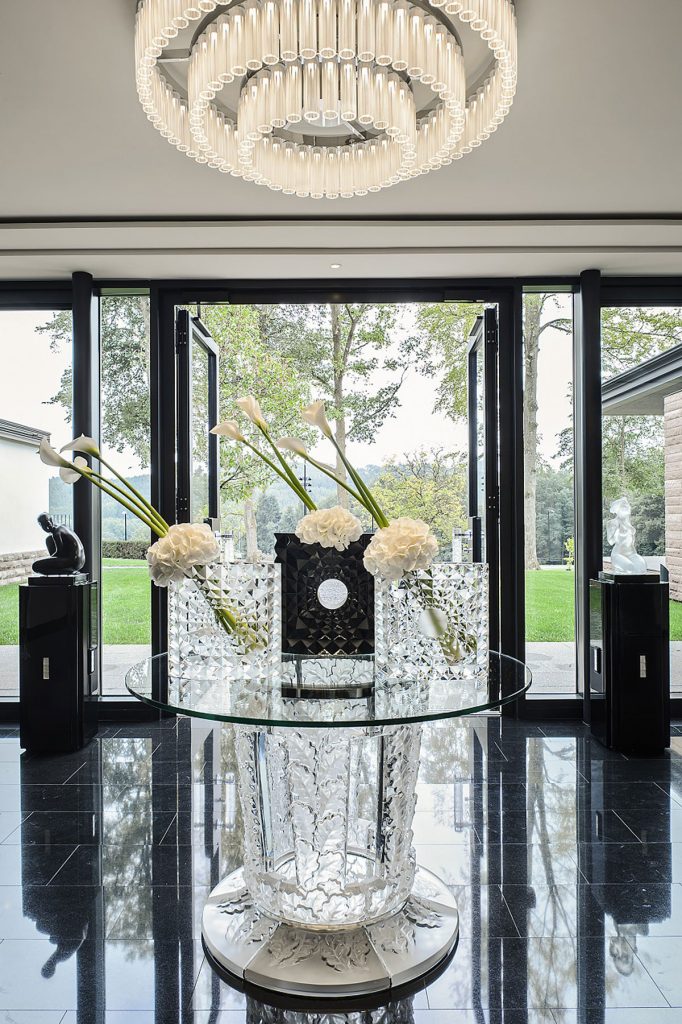
Luxury living with culinary excellence
When Silvio Denz was looking for a chef capable of rising to the culinary challenge in this prestigious setting, history smiled upon him once more. Jean-Georges Klein, chef at L’Arnsbourg, where the purchase of Lalique had been celebrated on that fateful evening in 2008, is one of the best French master chefs, holding three Michelin stars for 13 years. In 2014, he decided to leave the family-run restaurant that he owned with his sister. A happy coincidence led him to cross paths once more with Silvio Denz. The chef dropped all his plans to take on a new challenge: launching the restaurant at Villa René Lalique. The gourmet restaurant was awarded two stars by Guide MICHELIN in January 2016, within just three months of opening.
Lalique table settings are the perfect framework for serving dishes of such delicacy. The tone is set by Masque de Femme napkin rings and the replica 1924 crystal pepper and salt mills. Wine glasses and decanters are quickly filled with the finest crus selected by Romain Iltis, named Meilleur Ouvrier de France in 2015, who has worked with Jean-Georges Klein for several years to create perfect pairings of food and wine.
The choice of wine on offer is vast: beneath the restaurant Mario Botta has created a cellar with a state-of-the-art design to house the extraordinary collection of vintage wines amassed by the Denz family.
To travel there now is to immerse oneself in a fabled world of creativity and culinary excellence with crystal at its heart, in the universe of Lalique that is waiting to offer passionate explorers from far and wide the height of excellence.

About the Author
Frederick Fischer is the UK Managing Director of Lalique. Lalique is a French glassmaker, founded by renowned glassmaker and jeweller René Lalique in 1888. Lalique is best known for producing glass art, including perfume bottles, vases, and ornaments
If you’d like to become SBID Accredited, click here to find out more.
